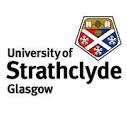





NORSOK N004 ANNEX K REV 4 takes into consideration:
 Interface shear stresses from axial capacity and torsional moment.
Interface shear stresses from axial capacity and torsional moment.
 Compressive stresses at lower end of the grout from bending moment and shear force.
Compressive stresses at lower end of the grout from bending moment and shear force.
 Fatigue from alternating interface stresses due to bending moment and axial load.
Fatigue from alternating interface stresses due to bending moment and axial load.
 Fatigue from contact pressure and friction forces due to bending moment and shear forces.
Fatigue from contact pressure and friction forces due to bending moment and shear forces.
 Bending moment is mentioned but considered as separate load.
Bending moment is mentioned but considered as separate load.
ISO 19902 considers:
 Interface shear stresses from axial capacity and torsional moment.
Interface shear stresses from axial capacity and torsional moment.
 Resistance against sliding.
Resistance against sliding.
 Shear forces.
Shear forces.
 Not bending moment.
Not bending moment.
 Grouted connections that comply with static strength requirements and are subjected to cyclically varying forces due to wave action do not require a detailed fatigue analysis.
Grouted connections that comply with static strength requirements and are subjected to cyclically varying forces due to wave action do not require a detailed fatigue analysis.
DNV-OS-J101 mentions:
 Torsion.
Torsion.
 Shear forces.
Shear forces.
 Axial loads.
Axial loads.
 Torque by resistance against sliding.
Torque by resistance against sliding.
 Bending moments that are significant(stresses from bending moment that exceed 50% of the axial load stresses), have to be transferred by a structural arrangement separate from grouted connection.
Bending moments that are significant(stresses from bending moment that exceed 50% of the axial load stresses), have to be transferred by a structural arrangement separate from grouted connection.
 Fatigue analysis when required.
Fatigue analysis when required.
API standards include:
 In plane bending moment.
In plane bending moment.
 Out of plane bending moment.
Out of plane bending moment.
 Axial tension and compression.
Axial tension and compression.
 Fatigue analysis when required.
Fatigue analysis when required.
GL includes:
 Axial stresses
Axial stresses
 Shear stresses
Shear stresses
 Torsional moment.
Torsional moment.
 Bending moment (with suggestion, as mentioned above, that a detailed bending moment calculation is made with the aid of a FEM program or by testing for more accurate outputs)
Bending moment (with suggestion, as mentioned above, that a detailed bending moment calculation is made with the aid of a FEM program or by testing for more accurate outputs)
 Fatigue calculations when required.
Fatigue calculations when required.
All the above can be summarized in the matrix shown below:
| NORSOK | ISO | DNV | API | GL | |
|
|
|
|
|
|
|
|
|
|
|
|
|
|
|
|
|
|
|
|
|
|
|
|
|
|
|
|
|
|
|
|
|
|
|